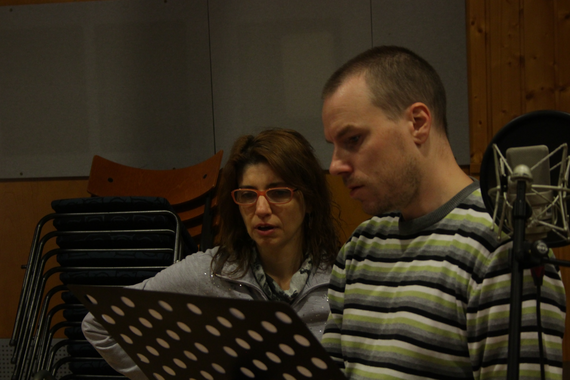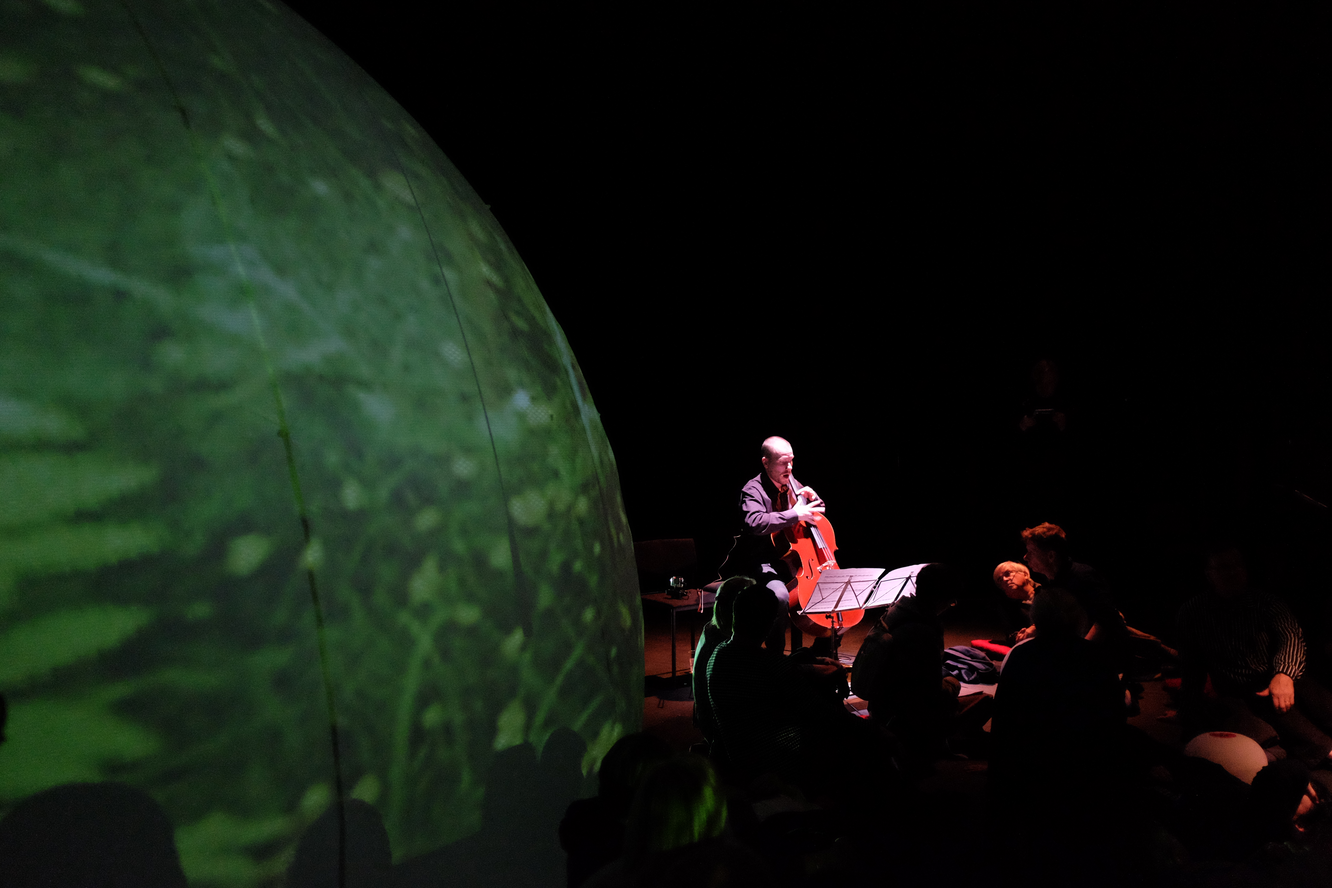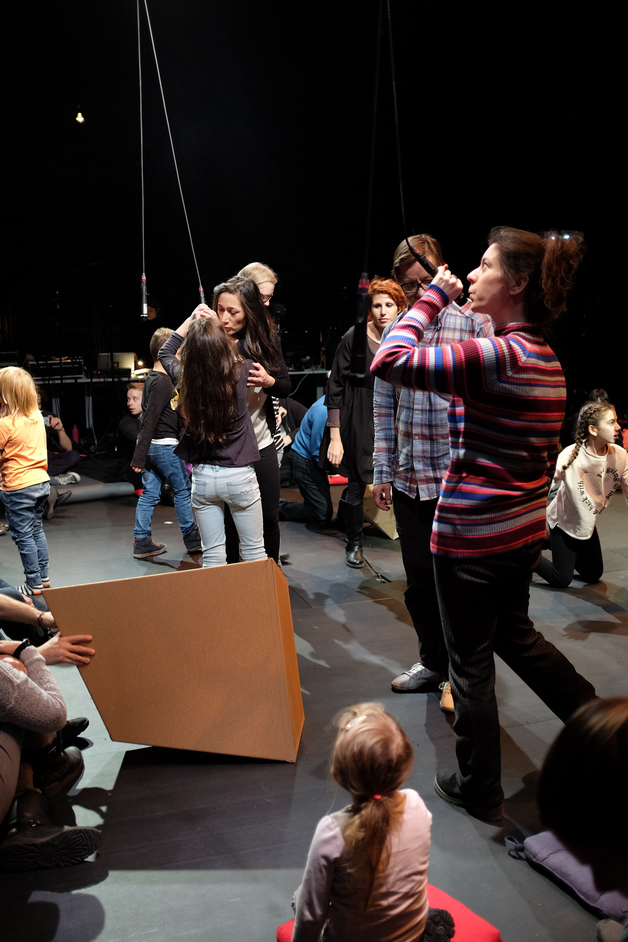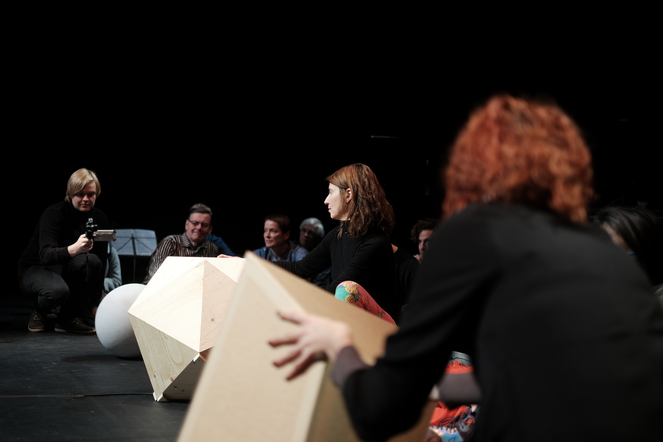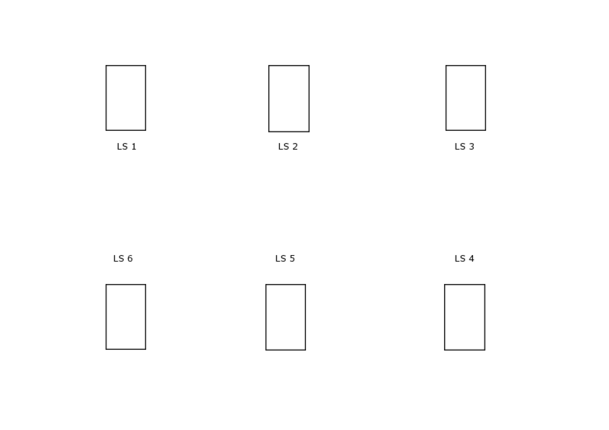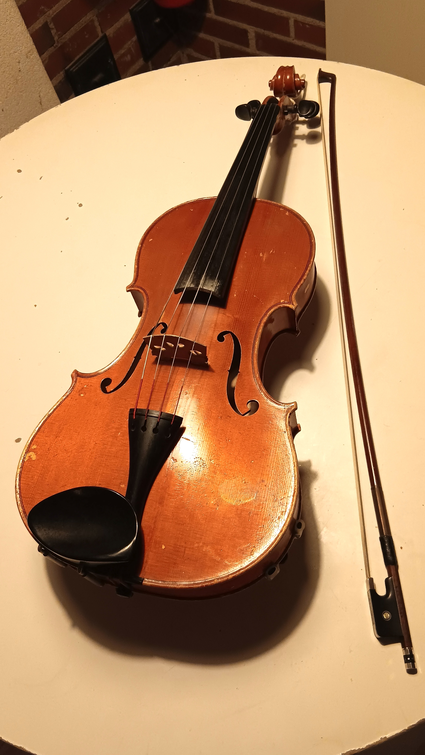In this performance, the composer Paola Livorsi, together with Juho Laitinen, Marek Pluciennik, and Roberto Fusco, has created a unique art work that weaves together sound with the infinite parameters of space. Her practice is inspired by composing scores that challenge the traditions of playing music to a passive public. With Imaginary Spaces, Livorsi includes the audience in a sensorial journey that merges sound, image and technology. At the core of the performance is the cellist Juho Laitinen who is accompanied by Livorsi, Marek Pluciennik (processed live cinema) and Viktor Toikkanen (live electronics); together they layer sounds of the cello with voice and imagery. With the addition of audience participation, the ensemble is made complete.
The pathway to the spaces of the imaginary is found in the moment the piece is performed; the score of the work will never be the same and is a unique experience each time it comes to life. In the words of Simone Weil:
“I am other than I imagine to be,
To reduce oneself, to shrink to the point you fill in space and time
Stop time to an instant
It’s a void for us, what we can’t represent nor define. But this void is fuller than every fullness
To love a stranger as thyself implies: to love thyself as a stranger
Through art is recreated the alliance between body and soul”
Project plan 4, 20.9.2016
Imaginary Spaces, Black Box 18.10.2016
Paola Livorsi, concept and sound design, Juho Laitinen cello, voice and sound design, Roberto Pugliese live electronics and sound design, Marek Pluciennik live video, Pasi Pehkonen light design, Timo Pyhälä scenography
1. Cello and electronics (about 10-15 min.)
granular system - talking cello
grains around the space - trajectories in space
MAX concatenative synthesis Ircam CataRT
http://imtr.ircam.fr/imtr/CataRT - Description
Image following grain distribution in time
2. Swinging microphones from ceiling
To attire people´s attention and invite them to participate by speaking in the mics
Spoken voice will trigger cello sounds, played by Catart
very small motors, slow pendulum movement
es. 8-10 mics
3. Audience invited to move around in space
sensitive areas/spaces
cardboard boxes with mics inside (step on, tap) - trigger voices and cello sounds
surfaces with mics inside different reverberation times & filter
ex. 4 areas, 4 objects
switches on off effects - tapping - trigger sounds
tapping on things - different matters, sound qualities, glassy etc.
people invited to play with wireless camera, enclosed in an object
Juho changing position in other part of the hall (in darkness)
Path/labyrinth
people to walk on a predetermined path, movement detected with a webcam, people together or distant in space ---> diffusion sounds
4. cello and electronics (about 10-15 min.)
cello in another part of the hall
in darkness, projections
duration 45´ ca.
to book:
2 computers
audio interface
1 mixer
8-10 loudspeakers, plus 6 on roof
10 microphones for drums, hanging + long cables (we´ll provide 12 volt motors to make them swing)
Online interview (31.10.-5.11.2022)
See full interview in the thesis, Appendix 1.1
P. How do you consider your relation between your own voice and your instrument's voice, and how it changed over time?
J. I used to take the common stance that the instrument is an extenion of one's own voice. Over time I've become more interested in their discrepancies, particulary in regard to what I should do with my voice: what should I say, to whom, and how?
I know think the instrument doesn't have a 'voice'; I can make sounds on and with it instead. I like to ask questions such as: how does friction work? What parts of the instrument are resonating, and in what manner? That way I can get to sounds that interest me.
P. How did the recordings we did together and/or the piece we developed together change your perception of this relation? Did this experience bring to your attention any new insights or observations?
J. As far as I remember I viewed the recording [9.3.2016] as retrospection or documentation of something I had discovered earlier. Then the question was: to what degree can they be used in a different context? More broadly the question could be: how are the different voices in a group used when making a piece together? What kind of 'group' sound are we looking for - synthesis? chorus? fusion? soundscape?
Online interview (11.1.2023)
P. How do you consider your relation between your own voice and your instrument's voice, and how it changed over time?
D. I feel the relationship between my voice and the viola to be quite strong. I often develop lines or licks by singing them to myself, with a "shared voice" somewhat between the sound of my voice and an imitation of a viola sound.
I have developed over the years of playing a certain viola-sound-vocabulary with my own voice. As the viola is in contact with my jaw bone when playing, there is a certain vocality to the viola which is hard to share, similar to how one's voice cannot be heard in the same way when recorded.
This vocality is shared between me and the viola, but cannot really be shared with other people.
P. How did the recordings we did together and/or the piece we developed together change your perception of this relation? Did this experience bring to your attention any new insights or observations?
D. I have only through taking part in your research started thinking about this relation, but since then I'm thinking aobut it quite often!
"The playing person is fully present and does not hide their feelings or corporeality behind the instrument" (Laitinen 2013, 21)
"In the morning he's usually seated at the bus stop
in his stripy pijama with his toothbrush in his hand..."
"[a]nd he hears how
the alarm goes off in the apartment above his own
and he usually goes to the kitchen and makes a quick cup of
coffee..."
(Züri West, 'Zorro' vv. 1-2)
"The player and the instrument are organisms that live and modify according to the influences, both empirical and metaphysical, of the environment" (Laitinen 2013, 22)


